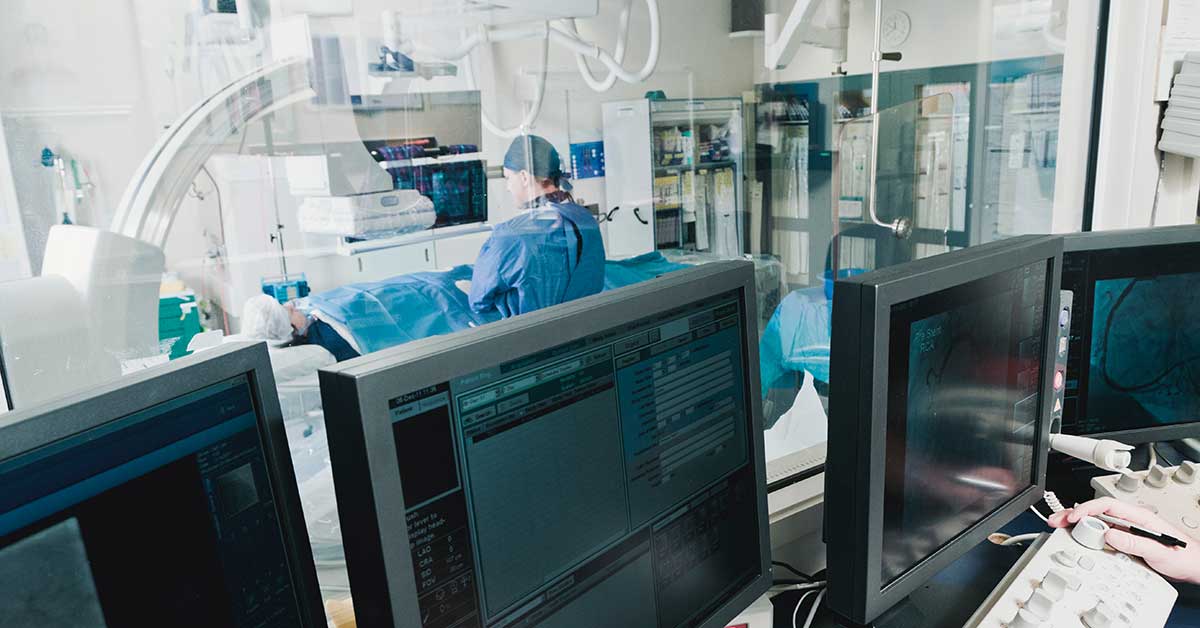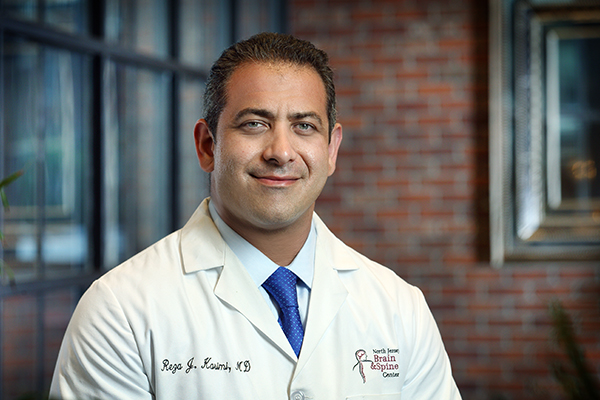Thrombectomy saves young mom’s life and a child’s hope


One morning in late 2021, a pre-teen girl found her mother slumped on the floor in their home, paralyzed on the right side, unable to speak and barely responsive. Frightened, the child called her father. He promptly called 911.
Emergency medical services took the mom to the Hackensack University Medical Center emergency department, where the care team rapidly identified the signs of a massive stroke and called me, a surgeon specializing in endovascular neurosurgery, to evaluate the patient immediately.
When I got the emergency call, I was told, “This is a woman in her early 40s who was found down on the floor by her young daughter.” I considered how this patient’s daughter was my own son’s age, and I could imagine how events unfolded for the family that morning. We always take each patient’s situation personally and put internal pressure on ourselves to do our best. Not only was this a challenging case by its serious nature, but in my mind, I’m thinking, there’s a child who just witnessed her parent in a state that no child should see their parent. I have to fix this perfectly.
The mother’s stroke was not caused by a blood clot or cholesterol fragment but from a carotid artery dissection (CAD). This type of blood vessel blockage is the most common cause of stroke in younger patients. A dissection occurs when the inner lining of the carotid artery separates from the other layers of tissue that form the blood vessel’s walls. The condition can stem from a neck injury or exercise, but frequently, it comes out of nowhere.
The separation of the blood vessel wall causes a flap to form inside the artery that can completely block blood flow to a large area of the brain. In addition, the dissection causes more blood clots (thrombus) to form within the carotid artery, further stopping the blood flow that carries essential oxygen and nutrients to the brain. Left untreated, dissections can cause severely disabling strokes, and in some cases, these strokes can be fatal.
Because this patient was brought to a certified comprehensive stroke center, the emergency team was able to recognize the signs of a major stroke right away. After the stroke was identified, we used high-tech brain scans to immediately image the blockage. We could also determine exactly the extent of the cerebral infarction (a medical term indicating that blood flow to the brain has been cut off, causing the affected parts of the brain to die).
As with any type of stroke, time was of the essence. We were able to diagnose her condition and transfer her to the hospital’s cardiac catheterization lab (“cath lab”) right away. There, I performed a precise technical procedure called a mechanical thrombectomy to restore blood flow and try to salvage as much of her brain as possible—as fast as possible.
 If we could open the artery, remove the blockages, and restore blood flow quickly enough, we could prevent what would have likely been a significant, disabling or even deadly stroke. Mechanical thrombectomy allows experienced neurosurgeons to turn a potentially disastrous stroke into a small stroke that results in minimal to no disability for many patients.
If we could open the artery, remove the blockages, and restore blood flow quickly enough, we could prevent what would have likely been a significant, disabling or even deadly stroke. Mechanical thrombectomy allows experienced neurosurgeons to turn a potentially disastrous stroke into a small stroke that results in minimal to no disability for many patients.
To perform this procedure, I first had to maneuver catheters, small tubes, and wires from a small puncture site in the patient’s leg all the way up to her head and neck to guide a metallic stent that would reopen and repair the damaged artery. Once the carotid artery was repaired, I then had to carefully work through the stent with a suction catheter and other advanced tools to clear out all the blockages that had formed throughout the left side of her brain. In her case, I was able to do the carotid artery repair and remove all the blood clots quickly.
This story has a very happy ending. Thanks to the speed with which the patient got to the stroke center, the advanced technology available, and an experienced neurosurgeon on hand to perform this complicated thrombectomy procedure, this mom was discharged home in only two days, returning to her daughter with open arms. Within days she made a near 100% recovery in the strength of her right arm strength and has regained total functionality of her speech and memory. I saw her in the office 3 weeks later and you would not know anything ever happened at all.
Opening a dissection flap requires an inordinate amount of skill and practice. Not only does a neurosurgeon need a keen understanding of the tiny, state-of-the-art tools, but he or she must have specialized training (and a lot of experience) to precisely maneuver the tools through the blockage, the stent, and the blood vessels quickly and without causing any further damage.
This is why I recommend that stroke patients seek care at a comprehensive stroke center, if possible, because sophisticated procedures like thrombectomies can only be performed at certified facilities and are best accomplished by specialists who perform this procedure very frequently.
My partner Dr. Daniel Walzman and I have spent more than a decade honing and refining the technique to open dissections, excavate clots, and clear the arterial pathway to restore blood flow to infarcted brain tissue. In fact, the neurosurgeons at New Jersey Brain and Spine routinely performed thrombectomies on stroke patients long before the procedure became the national standard of care in 2015, and we continue to perform at least 50-90 of these procedures per year.
I’m proud to say our practice was instrumental in building the comprehensive stroke center at Hackensack University Medical Center. Not only were Dr. Walzman and I bringing this technology to the hospital over 10 years ago, but we engaged with other hospital departments and personnel to define efficient and effective protocols that rapidly identify stroke patients, triage them, and transfer them to the cath lab in record time.
Time is of the essence for treating any restriction of blood flow to the brain, such as an ischemic stroke, in which a blood clot or piece of plaque blocks an artery, or a hemorrhagic stroke, when a blood vessel ruptures or there’s bleeding in the brain.
In cases of a dissection, stroke symptoms can include a sharp neck pain or a sharp pain behind the ear or jaw, which could indicate the splitting of the artery wall. The resulting stroke can cause feelings of weakness, numbness, a feeling of heaviness on one side of the body involving the face, arm and leg, slurred speech or the inability to speak.
Anyone who experiences any combination of these symptoms should go immediately to an emergency room, preferably one associated with a comprehensive stroke center. Brain tissue that doesn’t receive blood flow in the first 6-24 hours of an incident is irreversibly damaged.
Remember, in the case of a stroke, time isn’t money. Time is brain.
Meet Dr. Reza Karimi, author of this blog.
Learn more about New Jersey Brain and Spine’s Neurovascular Center for Aneurysm, AVM and Stroke.
To make an appointment, contact us online.